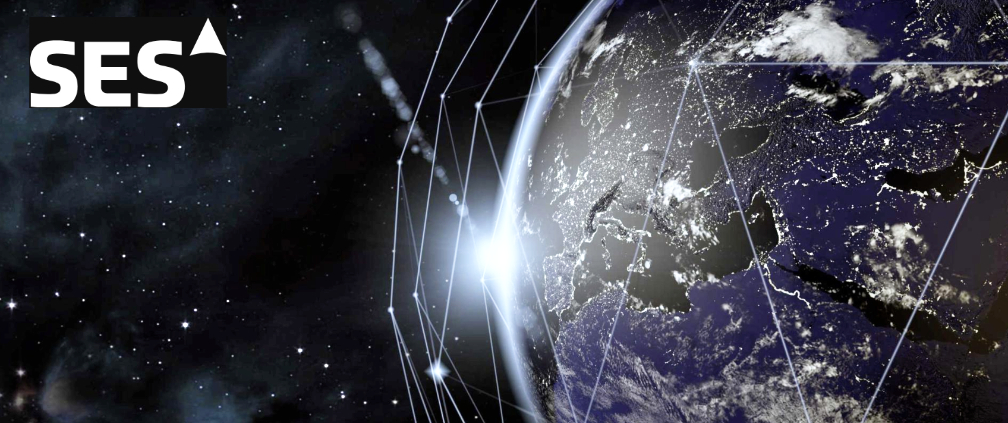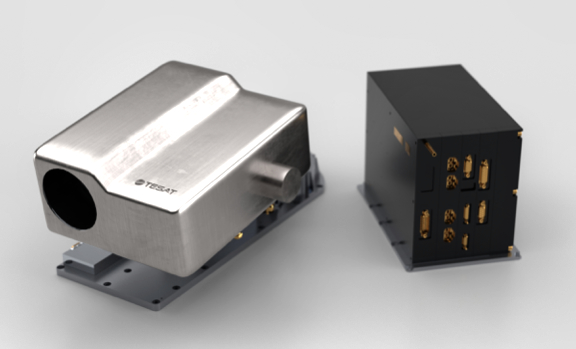
The EAGLE-1 consortium lead SES has announced a new key partner, TESAT, responsible for developing and integrating the Quantum Key Distribution (QKD) payload for the EAGLE-1 satellite.

The SES and TESAT partnership is aimed at achieving the next key milestone in building and implementing Europe’s pioneering, quantum secure communications initiative, EAGLE-1. Supported by the European Space Agency (ESA) and the European Commission, EAGLE-1 is a quantum key system that integrates space and ground segments that will deliver secure transmission of encryption keys across geographically dispersed areas and connect EU’s national quantum communications infrastructures for truly sovereign networks.

TESAT will manufacture the QKD payload comprising the Scalable Optical Terminal SCOT80 to establish a secure optical link from space to ground, as well as the QKD module of the satellite.
The technology integrated into the EAGLE-1 system’s payload will include built-in redundancy and is specifically designed to be associated with the satellite communications and data transmission for such areas as government, telco operators, cloud providers and banking, to add guaranteed security of the cryptographic applications.

“EAGLE-1 is a project that will benefit the whole of Europe, and being able to work with the leading technology players in the market to co-develop it and together shape this innovative secure technology is a privilege to SES. The addition of the secure optical links and the actual QKD module brings us closer to implementation, testing and further scaling the technology, that can ultimately serve millions of users. This elevates secure communications to an entirely new level, supporting development of reliable pan-European quantum communications infrastructures.”
— Ruy Pinto, Chief technology Officer of SES
“We are delighted to be selected as payload prime by SES and looking forward to bring our expertise in integrating secure technologies, and a track record of almost 80,000 executed optical satellite links for the benefit of this highly-important and timely European project. The EAGLE-1 system allows for achieving synergies together with leading industry partners, SMEs and institutes, reducing time to service and to market for the quantum secure technologies and its future key users, such as governments and institutions, or banking sector. Together with our partners, we are looking forward to strengthen European collaboration at all levels, including SMEs and institutions and contributing to European sovereignty in space.”
— Thomas Reinartz, CEO of TESAT
The EAGLE-1 satellite is due to launch in 2024 by Arianespace on the Vega C rocket from Europe’s Spaceport in French Guiaon-orbit mission supported by the European Commission, anf will provide the European Union governments, institutions and critical business sectors early access to long-distance QKD, paving the way toward ultra-secure data transmissions across the EU.
As recently announced, the satellite platform for the Quantum Cryptography System will be delivered by the Italian aerospace company SITAEL.
About EAGLE-1
The EAGLE-1 project that is comprised of satellite and ground infrastructure is developed by SES and the consortium of 20 European partners and is co-funded by the ESA contribution of Germany, Luxembourg, Austria, Italy, the Netherlands, Switzerland, Belgium, and the Czech Republic under ARTES, as well as the European Commission through Horizon Europe. Once launched in 2024, the EAGLE-1 satellite will complete three years of in-orbit mission. During the operational phase, the satellite will allow European Union governments and institutions as well as critical business sectors early access to long-distance QKD that would path the way towards an EU constellation enabling ultra-secure data transmissions.
Quantum key distribution (QKD) enables two parties to produce and share a key that is used to encrypt and decrypt messages and is a secure method of communication.parties.
Learn more about EAGLE-1 and SES-led consortium of European partners at this direct link…
